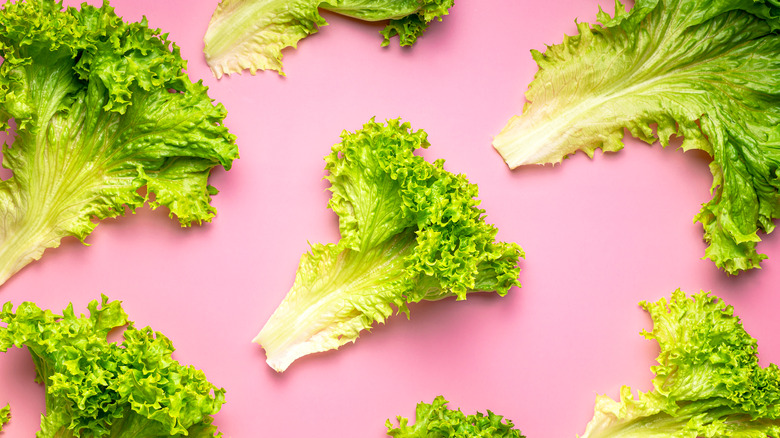Is It Safe To Eat Pink Lettuce?
If you've ever noticed your lettuce turning pink, you may have wondered if it's safe for you to eat. Although changing colors is generally a sign of stress and age, pink lettuce can be eaten safely as long as it's not exhibiting signs of decay, like wilting or slime (via Mental Floss). Pink lettuce is linked to pink rib — a stress response that causes the ribs of the lettuce to turn from white to pink. This occurs when lettuce is overmature and stored at high temperatures.
Pink lettuce can also be the result of oxidation — a chemical process caused by exposure to oxygen (via Eat or Toss). When lettuce is exposed to oxygen, it starts to deteriorate, causing it to turn either pink or brown. This is the same process that causes apples to turn light brown once they are sliced or bitten. Much like apples, once lettuce is exposed to air, it starts to discolor.
How to prevent lettuce from turning pink
The best way to prevent lettuce from turning pink is to keep it fresh. You can do this by keeping your lettuce in an airtight container and storing it in the refrigerator at relatively low temperatures (via Prepared Cooks). Reducing the amount of airflow to your lettuce by storing it in a plastic bag or food storage container will limit its exposure to oxygen and prevent it from going bad. Wrapping your lettuce in a paper towel can also increase its shelf life by reducing condensation and keeping it dry.
It's also important to keep your lettuce in the refrigerator and store it at the right temperature. Storing your lettuce at 40 degrees or lower will help keep your lettuce fresh and prevent it from turning pink. When you need to use your lettuce and take it out of the refrigerator, make sure you don't leave it out for more than 2 hours at a time.


